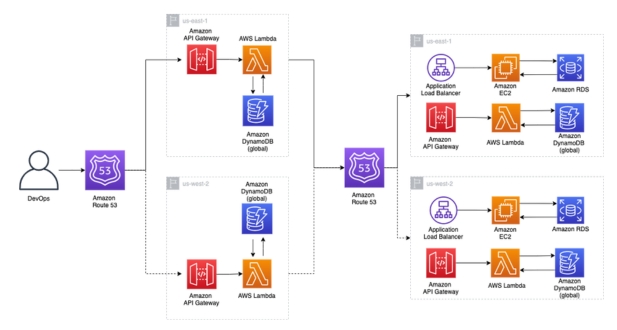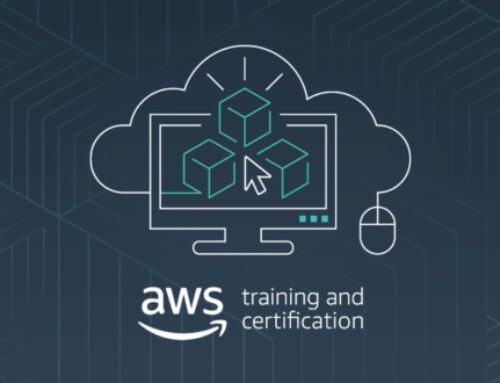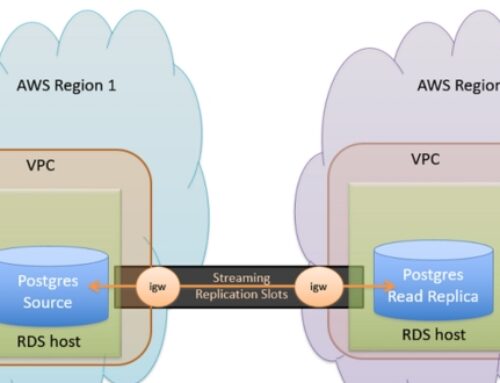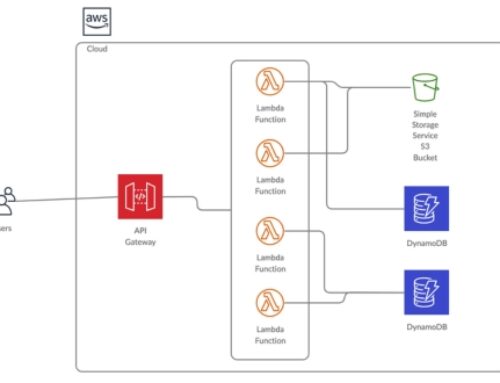Introduction
Multi-Region Deployment has become a critical strategy for organizations leveraging cloud computing, and AWS stands out as a pioneer in offering robust solutions for deploying applications across diverse geographical locations. This section will provide an in-depth understanding of Multi-Region Deployment, highlighting its significance and the myriad benefits it brings to modern cloud-based applications.
Overview of Multi-Region Deployment
In the dynamic landscape of cloud computing, deploying applications across multiple AWS regions is a strategic move that offers several advantages. A region in AWS represents a distinct geographical area where AWS maintains multiple data centers, known as Availability Zones (AZs). Each AZ is designed to be isolated from failures in other zones, providing redundancy and resilience.
Multi-Region Deployment involves distributing an application’s infrastructure and resources across two or more AWS regions. This strategy goes beyond traditional single-region deployment, providing enhanced reliability, scalability, and improved performance. By strategically placing resources in different regions, organizations can optimize user experience, minimize latency, and ensure uninterrupted service delivery.
Key aspects of Multi-Region Deployment include:
- Redundancy and High Availability: Multi-Region Deployment ensures redundancy by placing resources in different geographic locations. This minimizes the impact of potential failures in one region, enhancing the overall availability of the application.
- Scalability: Organizations can scale their applications horizontally by distributing workloads across multiple regions. This enables them to handle increased traffic, ensuring optimal performance even during peak usage periods.
- Disaster Recovery: Multi-Region Deployment serves as a robust disaster recovery strategy. In the event of a regional outage or disaster, applications can seamlessly failover to resources in another region, minimizing downtime and ensuring business continuity.
Benefits of Multi-Region Deployment
- Scalability: Multi-Region Deployment allows organizations to scale their applications horizontally to meet growing demand. By distributing workloads across regions, they can effectively handle increased user traffic and achieve better performance.
- High Availability: The deployment strategy ensures high availability by spreading resources across multiple regions. In case of a failure or outage in one region, the application can continue to operate smoothly from resources in other regions.
- Disaster Recovery: Multi-Region Deployment acts as a robust disaster recovery solution. In the face of natural disasters, technical failures, or other unforeseen events, applications can seamlessly failover to resources in alternative regions, preventing prolonged service interruptions.
- Global User Experience: By strategically placing resources closer to end-users in different parts of the world, Multi-Region Deployment reduces latency, providing a better and more responsive experience for global users.
- Regulatory Compliance: Some industries have regulatory requirements that mandate data residency in specific geographic locations. Multi-Region Deployment enables organizations to comply with such regulations by hosting data in the desired regions.
In summary, Multi-Region Deployment on AWS is a strategic approach that offers a multitude of benefits, including improved scalability, high availability, disaster recovery, enhanced user experience, and regulatory compliance.
Key Concepts in Multi-Region Deployment
In the realm of Multi-Region Deployment on AWS, several key concepts play pivotal roles in shaping the efficiency, performance, and resilience of applications. This section delves into these fundamental concepts, providing comprehensive insights into AWS Global Accelerator, latency considerations, and the geographical distribution of AWS infrastructure through Regions and Availability Zones.
Global Accelerator
Improving Application Performance with AWS Global Accelerator
AWS Global Accelerator is a service designed to optimize the availability and performance of applications for global users. It acts as a traffic manager, dynamically routing requests over the AWS global network to the optimal AWS endpoint based on health, geography, and routing policies.
Key Points:
- Anycast IP Addresses: Global Accelerator assigns anycast IP addresses to applications. This enables clients to connect to the nearest AWS endpoint, reducing latency and improving application responsiveness.
- Health Monitoring: The service continually monitors the health of endpoints and directs traffic to healthy endpoints. This ensures that users are always directed to the most available and responsive resources.
- Traffic Distributions: Global Accelerator allows fine-grained control over traffic distribution. Traffic can be routed based on routing policies, including weighted routing for distributing traffic unevenly and failover routing for high availability.
- Secure Sockets Layer (SSL) Termination: It provides SSL termination at the edge, offloading the SSL handshake process and reducing latency for encrypted traffic.
Latency Considerations
Mitigating Latency Challenges in Multi-Region Setups
Latency is a critical factor in Multi-Region Deployments as it directly impacts user experience. Organizations must strategically address latency challenges to ensure optimal application performance across diverse geographical locations.
Key Considerations:
- Content Delivery Networks (CDNs): Leveraging CDNs helps in caching and delivering content from edge locations, reducing the round-trip time for data requests and enhancing overall application speed.
- Edge Computing: Implementing edge computing strategies, where computation is performed closer to the source of data, helps reduce the back-and-forth communication between regions, minimizing latency.
- Smart Load Balancing: Using intelligent load balancing mechanisms helps distribute incoming traffic efficiently, considering factors like server health, location, and load, thereby optimizing latency.
- Route Optimization: Utilizing tools and services that offer dynamic route optimization helps in choosing the most efficient network paths, mitigating latency challenges.
AWS Regions and Availability Zones
Understanding the Geographical Distribution of AWS Infrastructure
AWS infrastructure is organized into Regions, which are separate geographic areas, and each Region consists of multiple Availability Zones (AZs). Understanding the distribution of these regions and zones is crucial for designing resilient and highly available architectures.
Key Insights:
- Regions: AWS has a global presence with multiple Regions located around the world. Each Region is designed to be isolated from others, ensuring data residency options, compliance, and disaster recovery.
- Availability Zones: Each Region comprises multiple Availability Zones, which are physically separated data centers. AZs within a Region are interconnected through low-latency links, providing redundancy and fault tolerance.
- Data Replication Across Regions: Organizations can achieve data redundancy and disaster recovery by replicating data across different Regions. This ensures that applications can continue operating even in the event of a complete regional outage.
- Cross-Region Resource Management: AWS provides services and features that enable organizations to seamlessly manage and replicate resources across different Regions, offering flexibility and scalability.
In essence, mastering the key concepts of AWS Global Accelerator, latency considerations, and the distribution of AWS infrastructure across Regions and Availability Zones lays the foundation for effective Multi-Region Deployment. These concepts empower organizations to optimize performance, ensure high availability, and strategically position resources to meet the diverse needs of global users.
Strategies for Multi-Region Deployment
The effectiveness of Multi-Region Deployment strategies hinges on making informed decisions about architectural choices, traffic routing policies, and the deployment of databases across multiple regions. This section explores the intricacies of choosing between active-active and active-passive architectures, implementing various traffic routing policies, and ensuring the consistency and availability of databases in a distributed environment.
Active-Active vs. Active-Passive Architectures
Choosing Between Simultaneous Operations and Failover Setups
- Active-Active Architectures:
- Simultaneous Operations: In an active-active architecture, all deployed regions actively handle user requests and process transactions simultaneously.
- Benefits: Offers high availability, scalability, and optimal performance as multiple regions share the load.
- Considerations: Requires robust synchronization mechanisms to maintain data consistency across regions. It is suitable for scenarios where low-latency access and redundancy are critical.
- Active-Passive Architectures:
- Failover Setup: In an active-passive architecture, one region serves as the primary (active) while others remain in standby (passive) mode. In case of a failure, traffic is redirected to the standby region.
- Benefits: Ensures resource efficiency as standby regions are only utilized during failover events, conserving costs.
- Considerations: Introduces potential latency during failover and requires mechanisms for automatic detection and redirection. Suitable for scenarios where cost optimization is a priority.
Traffic Routing Policies
Implementing Weighted, Latency-Based, and Geolocation Routing Policies
- Weighted Routing:
- Balancing Traffic Unevenly: Weighted routing allows organizations to distribute traffic unevenly among regions based on predefined weights. This is useful for scenarios where certain regions should handle more load than others.
- Use Cases: Prioritizing specific regions for resource-intensive tasks or distributing traffic based on regional capacities.
- Latency-Based Routing:
- Optimizing Based on Latency: Latency-based routing directs users to the region with the lowest latency, ensuring optimal response times.
- Benefits: Enhances user experience by minimizing delays in data transmission. Suitable for applications where low-latency access is crucial.
- Geolocation Routing:
- Routing Based on User Location: Geolocation routing directs users to the nearest region based on their geographical location.
- Advantages: Improves performance by reducing the physical distance between users and resources. Ideal for applications with a diverse global user base.
Multi-Region Database Deployment
Ensuring Data Consistency and Availability in Distributed Databases
- Data Replication Strategies:
- Synchronous vs. Asynchronous Replication: Choose between synchronous replication, where data is replicated in real-time, and asynchronous replication, which introduces a delay for improved performance.
- Considerations: The trade-off between consistency and performance. Synchronous replication ensures data consistency but may introduce latency.
- Read and Write Affinity:
- Optimizing Database Access: Distribute read and write operations across regions based on affinity. Read operations can be directed to the nearest region, while write operations can follow a more centralized approach.
- Benefits: Enhances performance by minimizing the impact of latency on read operations. Suitable for scenarios where reads outnumber writes.
- Global Databases:
- Unified Data Access: Explore solutions like AWS Global Tables that provide a fully managed, multi-region, and globally distributed database.
- Advantages: Offers a seamless and consistent database experience across regions, simplifying data access and management.
In mastering strategies for Multi-Region Deployment, organizations gain the ability to tailor their architectures to meet specific performance, availability, and cost considerations. Whether opting for active-active or active-passive setups, implementing diverse traffic routing policies, or ensuring data consistency in multi-region databases, a nuanced approach allows for the creation of resilient and responsive applications that cater to the dynamic needs of a global user base.
AWS Global Database Solutions
AWS offers robust global database solutions that empower organizations to manage data across multiple regions seamlessly. In this section, we delve into two key offerings—Amazon Aurora Global Databases and DynamoDB Global Tables—along with best practices for optimal global database management.
Amazon Aurora Global Databases
Implementing Global Databases for Reading Scalability
- Overview:
- Scalability Across Regions: Amazon Aurora Global Databases provide a solution for achieving high availability and improved read scalability by replicating the database across multiple AWS regions.
- Key Features:
- Read Replicas: Leverage read replicas in different regions to offload read traffic and enhance the performance of applications.
- Global Database Writes: Enable write operations on the primary cluster while read replicas are available globally.
- Benefits:
- Improved Read Performance: Distribute read traffic among replicas, reducing the load on the primary database and enhancing overall read performance.
- High Availability: Ensure data availability even in the face of regional outages, contributing to a resilient architecture.
DynamoDB Global Tables
Achieving Multi-Region Data Replication in NoSQL Databases
- Overview:
- Global Data Distribution: DynamoDB Global Tables extend the capabilities of DynamoDB by enabling automatic and multi-region replication of tables.
- Key Features:
- Multi-Region Writes: DynamoDB Global Tables allow for writes to occur in multiple regions simultaneously, ensuring low-latency access for users globally.
- Automatic Replication: The service automatically replicates data changes across regions, maintaining consistency.
- Benefits:
- Scalability and Low Latency: Dynamically scale read and write capacity globally, providing a responsive and scalable experience for users.
- Disaster Recovery: Ensure data durability and availability with automatic data replication, offering a robust disaster recovery mechanism.
Best Practices for Global Database Management
Ensuring Optimal Performance and Data Integrity Across Regions
- Proactive Monitoring:
Utilize CloudWatch: Implement CloudWatch for monitoring the performance of global databases. Set up alarms to notify administrators of any anomalies.
- Global Replication Strategies:
Understand Replication Lag: Be aware of replication lag in global databases and implement strategies to minimize the impact on data consistency.
- Cost Optimization:
Leverage Spot Instances: Explore the use of Spot Instances for non-critical workloads in certain regions, optimizing costs while maintaining performance.
- Security Measures:
Implement IAM Policies: Utilize AWS Identity and Access Management (IAM) policies to manage access control, ensuring data security across regions.
- Regular Testing:
Conduct Failover Testing: Regularly test failover scenarios to ensure that global databases can seamlessly handle unexpected events.
In adopting AWS Global Database Solutions, organizations gain access to tools that enhance the scalability, availability, and performance of their databases on a global scale. By leveraging Amazon Aurora Global Databases and DynamoDB Global Tables, coupled with best practices in global database management, businesses can establish a resilient and responsive data infrastructure capable of meeting the demands of a distributed user base.
Security Considerations in Multi-Region Deployments
Ensuring robust security measures is paramount when deploying applications across multiple AWS regions. In this section, we explore key security considerations, including network security and access management, to safeguard data and infrastructure in a multi-region environment.
Network Security Across Regions
Implementing Virtual Private Cloud (VPC) Peering and Transit Gateways
- VPC Peering:
- Secure Communication: Establish VPC peering connections between regions to enable secure and direct communication between virtual private clouds.
- Isolation: Leverage VPC peering to maintain isolation between different application tiers, enhancing security by limiting exposure.
- Transit Gateways:
- Centralized Network Hub: Deploy AWS Transit Gateway as a centralized hub for managing network traffic across multiple VPCs and regions.
- Simplified Connectivity: Streamline connectivity between VPCs, reducing the complexity of managing inter-VPC communication.
- Security Groups and Network ACLs:
- Fine-Grained Control: Implement security groups and network access control lists (ACLs) to define fine-grained rules for inbound and outbound traffic.
- Restrictive Policies: Enforce restrictive policies to control access between VPCs, minimizing potential security vulnerabilities.
Identity and Access Management (IAM)
Managing Access Control and Permissions in a Multi-Region Environment
- Cross-Account IAM Roles:
- Secure Cross-Account Access: Utilize IAM roles to securely grant cross-account access, allowing resources in one region to interact with resources in another.
- Least Privilege Principle: Adhere to the principle of least privilege, granting only the minimum permissions necessary for specific tasks.
- IAM Policies and Role Trust Relationships:
- Granular Policies: Craft IAM policies with granular permissions to control actions across different regions.
- Trust Relationships: Establish trust relationships between IAM roles, ensuring secure delegation of permissions between regions.
- Multi-Factor Authentication (MFA):
- Enhanced Authentication: Implement multi-factor authentication (MFA) to add an extra layer of security for IAM users accessing resources across regions.
- Reducing Unauthorized Access: MFA mitigates the risk of unauthorized access, especially crucial in multi-region environments with diverse access points.
- IAM Access Analyzer:
- Policy Analysis: Leverage IAM Access Analyzer to analyze resource policies and identify unintended access permissions.
- Policy Refinement: Regularly review and refine IAM policies based on the insights provided by Access Analyzer.
By prioritizing network security measures such as VPC peering, transit gateways, and IAM best practices, organizations can establish a secure foundation for multi-region deployments. These strategies not only safeguard against potential threats but also contribute to the overall resilience and integrity of applications spanning across diverse AWS regions.
Performance Monitoring and Optimization
Efficient performance monitoring and optimization are crucial components of successful multi-region deployments. In this section, we delve into the tools and strategies essential for maintaining optimal application performance across diverse AWS regions.
AWS CloudWatch Metrics
Utilizing CloudWatch for Monitoring Application Performance
- Real-Time Insights:
- Leverage AWS CloudWatch to gain real-time insights into the performance metrics of deployed applications across multiple regions.
- Monitor key metrics such as latency, error rates, and resource utilization to ensure a comprehensive understanding of application behavior.
- Custom Dashboards:
- Create custom dashboards in CloudWatch, aggregating relevant metrics from different regions for a centralized view.
- Facilitate quick identification of performance bottlenecks or anomalies, enabling proactive response to potential issues.
- Automated Alarms:
- Set up automated alarms in CloudWatch to receive notifications for predefined threshold breaches.
- Respond promptly to critical events, minimizing downtime and ensuring consistent performance across the multi-region infrastructure.
Optimization Strategies
Fine-Tuning Multi-Region Deployments for Efficiency
- Content Delivery Networks (CDN):
- Implement CDN services, such as Amazon CloudFront, to distribute content closer to end-users and reduce latency.
- Optimize content delivery for improved user experiences across different geographical locations.
- Auto-Scaling Configurations:
- Configure auto-scaling policies to dynamically adjust resources based on demand in each region.
- Ensure optimal resource utilization while maintaining the ability to handle varying workloads efficiently.
- Geographic Load Balancing:
- Utilize geographic load balancing strategies to direct traffic to the closest AWS region based on user location.
- Distribute workloads intelligently, minimizing latency and enhancing overall application responsiveness.
- Resource Tagging for Cost Optimization:
- Implement resource tagging practices to categorize and track expenses associated with multi-region deployments.
- Analyze cost data and make informed decisions to optimize resource allocation and usage.
By combining robust performance monitoring through CloudWatch with strategic optimization measures, organizations can not only maintain consistent performance levels but also ensure cost-effectiveness in their multi-region AWS deployments. These practices contribute to a resilient and efficient infrastructure capable of meeting the dynamic demands of diverse user bases.
Cost Management in Multi-Region Deployments
Cost management is a critical aspect of multi-region deployments, and understanding the intricacies of cost structures is paramount for efficient resource utilization. This section explores key considerations and strategies for optimizing costs in a globally distributed setup.
Understanding Cost Structures
Analyzing Cost Implications in a Globally Distributed Setup
- Data Transfer Costs:
- Grasp the impact of data transfer costs between regions, considering both inbound and outbound data transfer.
- Optimize data flows and choose cost-effective transfer options to minimize expenses associated with inter-region communication.
- Resource Costs Across Regions:
- Evaluate the cost structures of resources deployed in different regions.
- Consider regional pricing variations and adjust resource allocation based on the unique cost dynamics of each AWS region.
Cost-Effective Resource Utilization
Strategies for Optimizing Costs While Maintaining Performance
- Reserved Instances (RIs) and Savings Plans:
- Leverage Reserved Instances (RIs) and Savings Plans to benefit from significant cost savings for long-term resource commitments.
- Align reserved capacity with anticipated usage patterns across regions to maximize cost-effectiveness.
- Auto-Scaling and Resource Right-Sizing:
- Implement auto-scaling configurations to dynamically adjust resources based on demand in each region.
- Continuously monitor resource usage and right-size instances to match the evolving needs of applications, ensuring optimal cost-efficiency.
- Tagging for Cost Allocation:
- Utilize resource tagging practices to categorize expenses and allocate costs accurately across departments or projects.
- Enhance visibility into spending patterns and facilitate targeted optimization efforts in specific areas.
By understanding the nuances of cost structures and adopting strategic resource optimization measures, organizations can strike a balance between performance and cost-effectiveness in their multi-region AWS deployments. This approach ensures that the benefits of global distribution are maximized while keeping operational costs in check.
Case Studies: Successful Multi-Region Implementations
In this section, we delve into real-world examples to showcase how organizations have harnessed the power of effective multi-region deployment strategies. By exploring lessons learned and best practices from these case studies, readers can gain valuable insights into successful implementations.
Real-World Examples
- Netflix’s Global Content Delivery:
- Explore how Netflix strategically distributes content across multiple AWS regions to enhance streaming performance for users worldwide.
- Understand how their architecture ensures low latency and high availability, contributing to an unparalleled streaming experience.
- Airbnb’s Resilient Infrastructure:
- Examine how Airbnb employs a resilient multi-region infrastructure to ensure continuous service availability for its global user base.
- Learn about their failover mechanisms and how they manage data consistency across regions for a seamless user experience.
Lessons Learned and Best Practices
- Optimizing for User Experience:
- Uncover insights into how organizations prioritize user experience by strategically deploying resources in proximity to end-users.
- Learn best practices for minimizing latency and enhancing application responsiveness across diverse geographic locations.
- Disaster Recovery Success Stories:
- Explore instances where organizations effectively leveraged multi-region setups for robust disaster recovery strategies.
- Extract valuable lessons on maintaining business continuity and data integrity during unforeseen disruptions.
By examining these case studies, readers can gain a deeper understanding of the diverse applications of multi-region deployment strategies. Additionally, they can glean practical insights and best practices to inform their own multi-region implementation journeys.
Future Trends in AWS Multi-Region Deployment
This section delves into the future landscape of multi-region deployment, offering a glimpse into the advances that organizations can anticipate in global cloud infrastructure and the evolution of AWS services supporting such deployments.
Advances in Global Cloud Infrastructure
- Edge Computing Integration:
- Explore the integration of edge computing into multi-region deployment strategies, allowing organizations to process data closer to the source for improved efficiency.
- Understand how this shift can enhance real-time applications and reduce latency for users worldwide.
- Hybrid Cloud Interconnectivity:
- Delve into the emerging trend of seamlessly connecting multi-region deployments with on-premises and hybrid cloud environments.
- Anticipate advancements that bridge the gap between different infrastructures, providing a unified and interconnected cloud experience.
AWS Service Evolution
- Enhancements in AWS Global Services:
- Predict how existing AWS global services like Global Accelerator and Global Databases may evolve to offer enhanced features and capabilities.
- Stay informed about updates that contribute to better performance, scalability, and resilience in multi-region architectures.
- Integration of AI in Deployment Strategies:
- Explore the integration of artificial intelligence (AI) to optimize resource allocation and automate decision-making in multi-region deployments.
- Anticipate how AI-driven insights can contribute to more efficient and adaptive global infrastructures.
By staying abreast of these future trends, organizations can proactively adapt their multi-region deployment strategies, ensuring they remain at the forefront of innovation in the dynamic landscape of cloud computing.
Conclusion: Mastering AWS Multi-Region Deployment for Scalability and Resilience
Mastering AWS Multi-Region Deployment is pivotal for organizations seeking unparalleled scalability and resilience in their cloud architectures. By embracing the strategies outlined in this guide, businesses can harness the full potential of a global cloud infrastructure. The benefits extend beyond mere redundancy, encompassing enhanced performance, minimized latency, and optimal resource utilization.
Efficient multi-region deployment is not just a technical consideration but a strategic imperative. It enables organizations to cater to diverse user bases, adhere to regulatory requirements, and fortify their applications against unforeseen disruptions. As technology advances, the landscape of multi-region deployment evolves, presenting new opportunities and challenges.
Embracing future trends, optimizing costs, ensuring security, and learning from successful case studies are integral components of this mastery. The journey involves not just adopting current best practices but also staying vigilant to upcoming innovations in AWS services and global cloud infrastructure.By adopting a forward-looking mindset, organizations can position themselves to navigate the complexities of a multi-region deployment, unlocking the true potential of AWS for a resilient, scalable, and future-ready cloud architecture.









